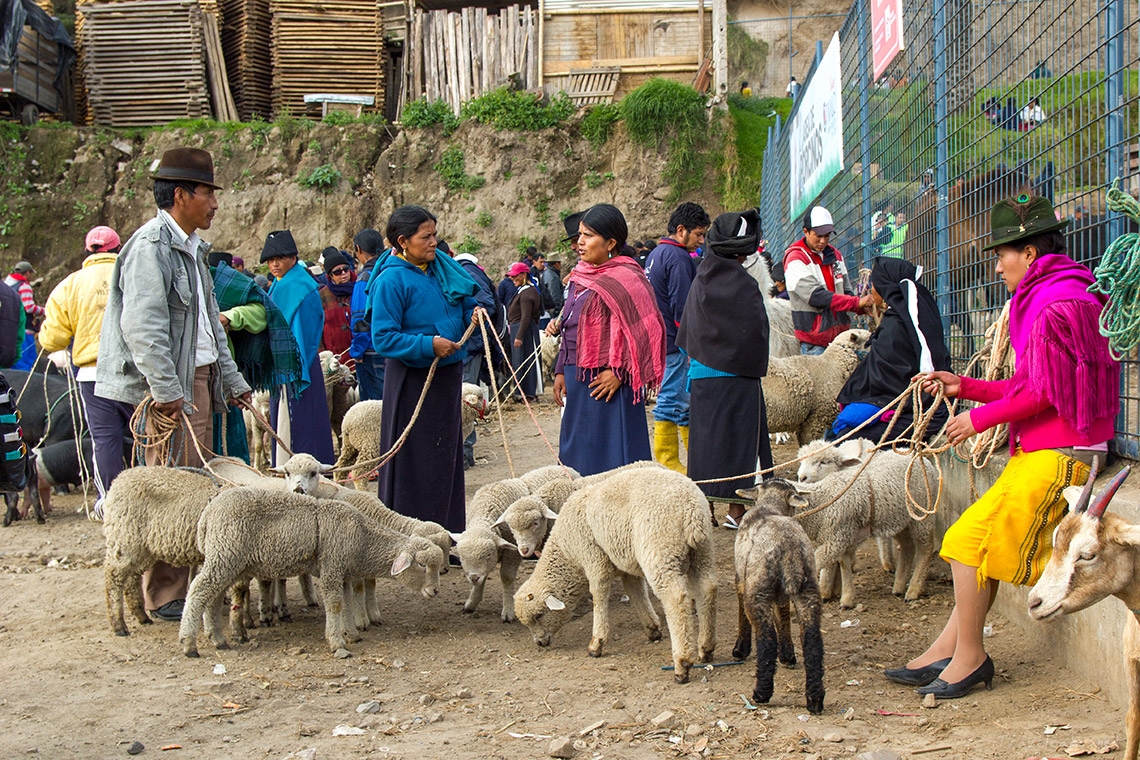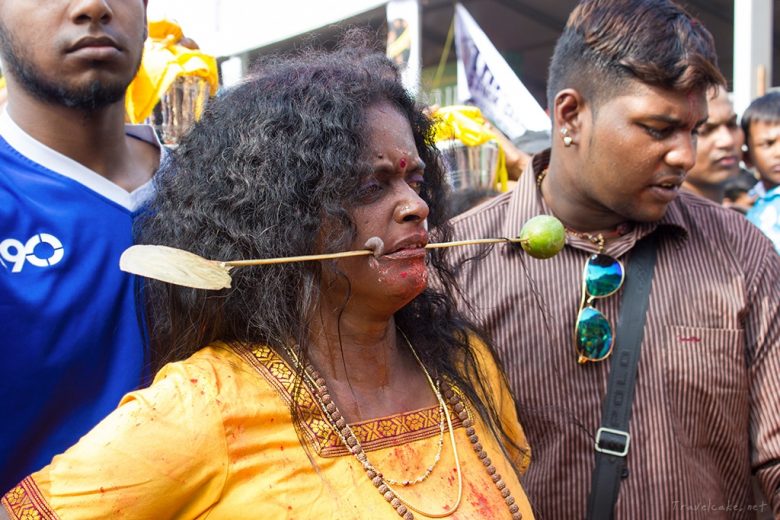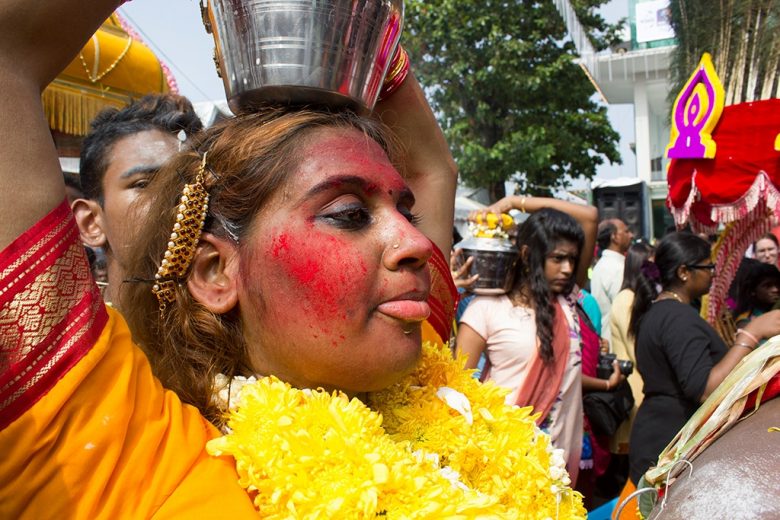A visit to the indigenous market of Otavalo in Ecuador is probably one of the most advertised activities in Quito’s guest houses and travel agencies. It’s said to be one of the largest and oldest indigenous market of South America and every single guide book will tell you it’s a must-do if you’re visiting the Quito area. That’s exactly the reason why I wasn’t sure if I’d want to go. (more…)
Category: Culture and Festivals
-
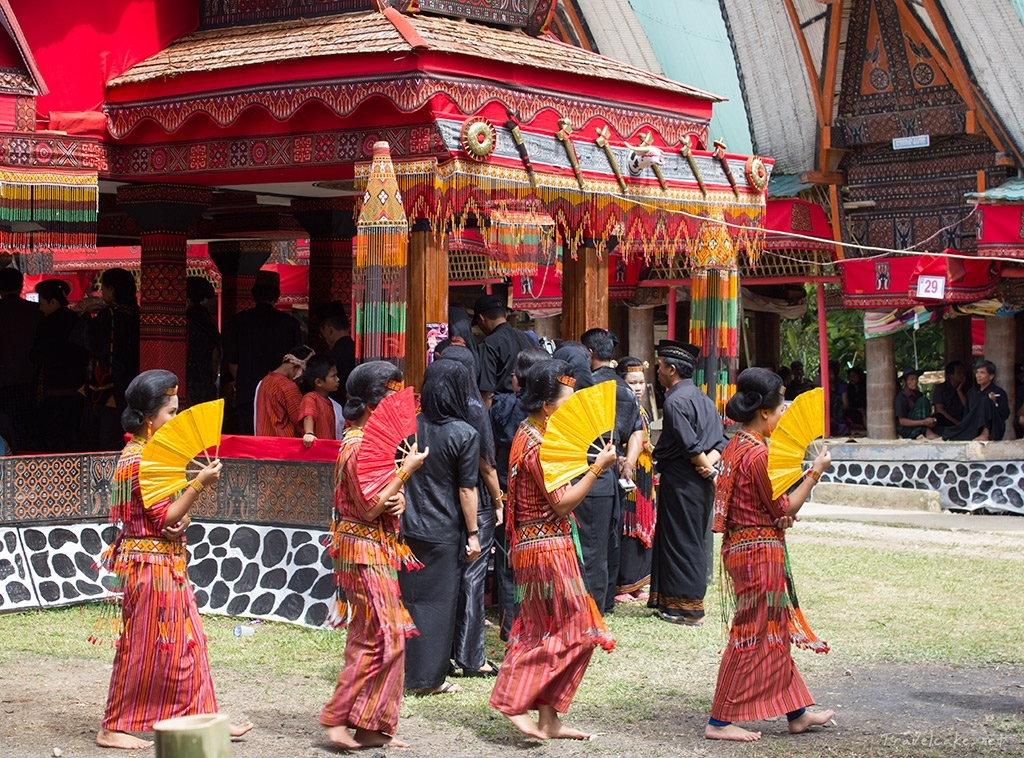
Torajan Death Rituals
“Would you like to go to a funeral, m’am?”
Not exactly the question you’d expect when stepping out of a long distance bus… And yet, what this man was proposing, is quite normal in Tana Toraja. In fact, funerals are the “main attraction” in the region. Visitors mostly come to learn about the Torajan culture in which death happens to play a central role. The Torajans are known for their elaborate traditional funeral rites. Tana Toraja, which means land of the Toraja people, is located in South Sulawesi, Indonesia.
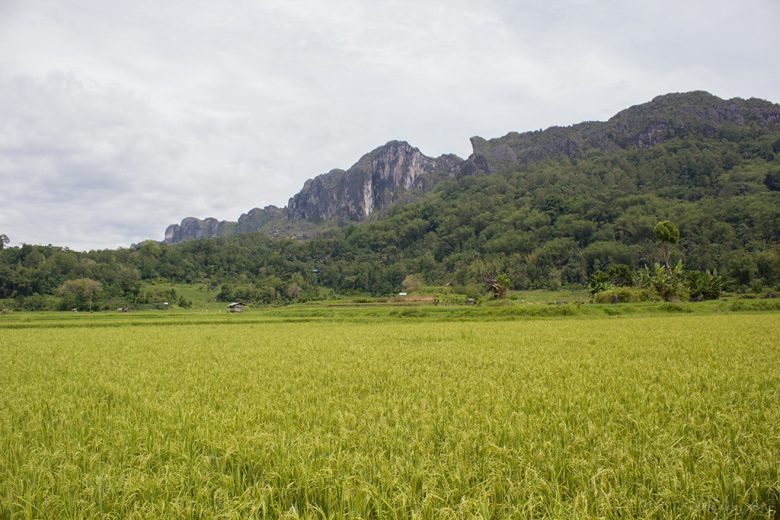
arriving in Tana Toraja, Sulawesi Intrigued by this culture, we agreed to the invitation and headed to the funeral only minutes after dropping our bags at the hotel. Luther, our guide, advised us to gift a few packs of cigarettes to the mourning family. “Cigarettes”? How ironic. He also told us we were very lucky; we were going to the funeral of a very rich lady who had long been chief of village…
“Lucky”? What a confusing use of words…
The deceased lady’s family welcomed us warmly and insisted we’d sit with them. We were offered tea and biscuits while encouraged to chat about our countries. This was all very awkward. The taboo around death in Western cultures was clearly nowhere to be found around here.
The Torajans seemed very “relaxed” about it all. That might have something to do with the fact that when people pass, they are not buried straight away. Their families continue to work in order to gather all necessary funds to finance the funeral. It may take months or years before the burying rituals begin, depending on the family’s cash flow.
Meanwhile, the bodies are embalmed, wrapped in cloth and kept in their traditional houses or ‘tongkonan’, under the same roof with their kin. Their spirits then dwell around the village until the burial. The dead aren’t considered dead, but merely ‘incurably ill’ until the funeral is complete. They are treated as though they were still alive. Family members take turns in sitting with the body, brining it food, water and cigarettes on a daily basis. Not doing so would lead the deceased to think they aren’t cared about and he/she would bring bad luck to the village.
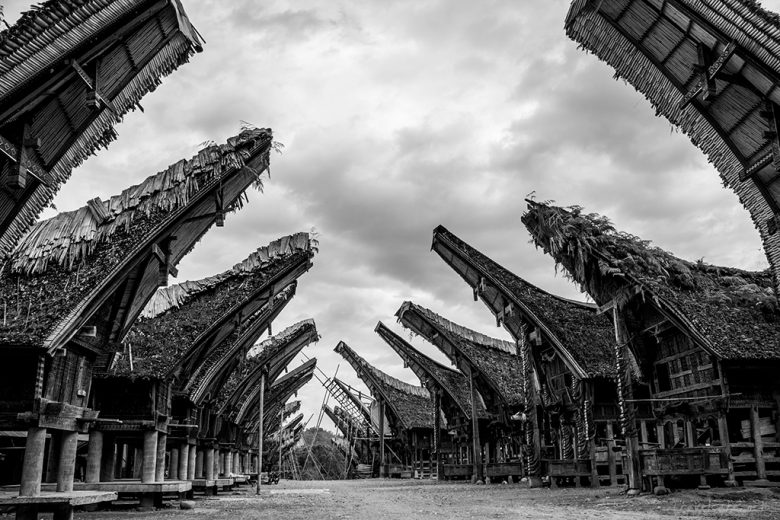
tongkonans In Torajan culture, the funeral is the most important ceremony in life. One leads his life in order to have the biggest, most elaborate funeral possible. The 100 or more guests always bring a gift: cigarettes, rice, a pig or a buffalo according to their financial ability. The funeral lasts 11 days and consists of serval rites.
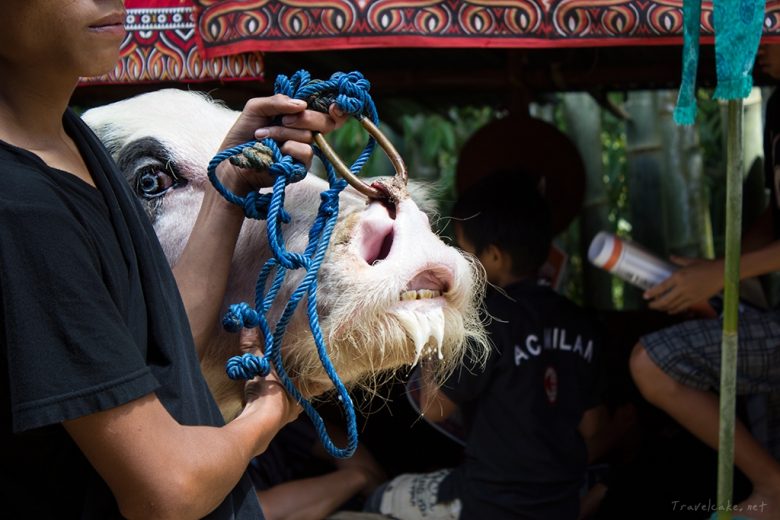
highly prized buffalo being gifted to the family 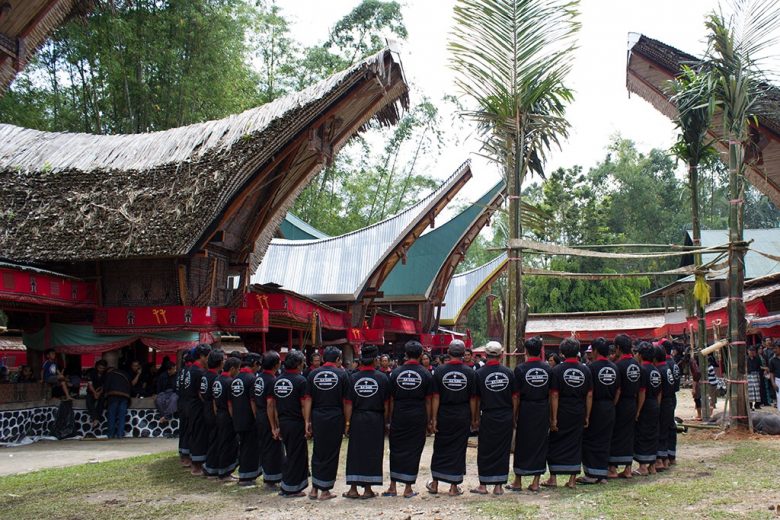
chanting and dancing 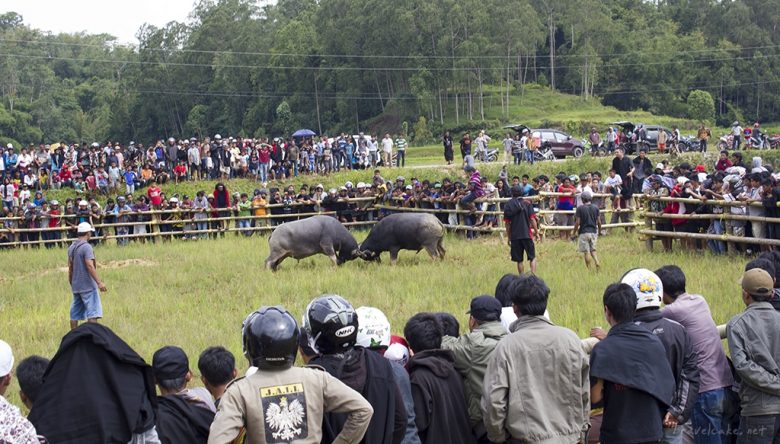
buffalo fighting is part of the funeral rites 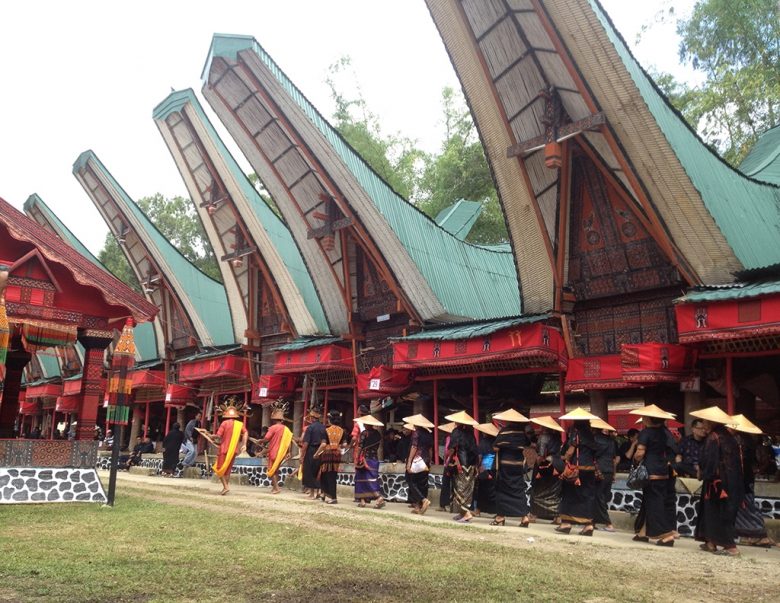
a procession of the closest family members 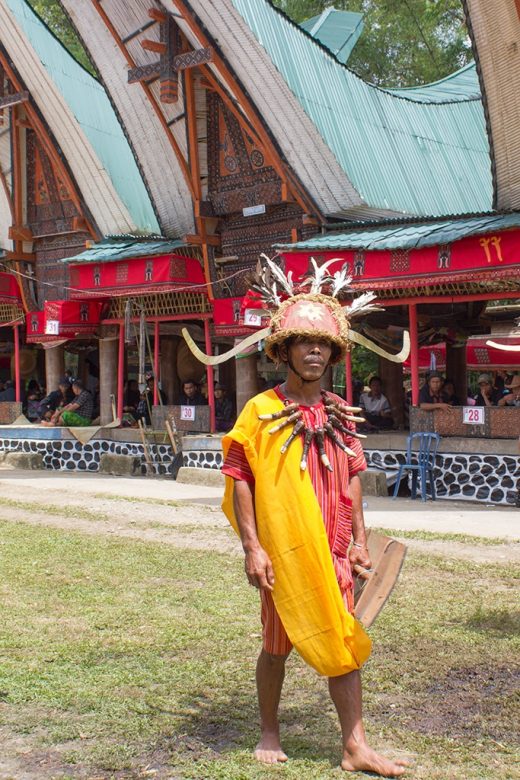
spiritual men lead the procession Torajan funerals are a bloody affair. The deceased’s soul is believed to travel to the afterlife on a buffalo or horse. How do you bring livestock to your afterlife? By sacrificing it, of course. Therefore, the more buffalo offered, the more reassured the family will be that their loved ones will reach his or her final destination safely. Apart from buffaloes, the dead will also need to bring along their most valuable possessions, including the rest of their livestock. This is one of the most important funeral rites: pigs and buffaloes are slaughtered by the dozens. Their souls join their owners while their flesh is distributed with the living family and guests. How’s that for a party favour, a big bag of meat…
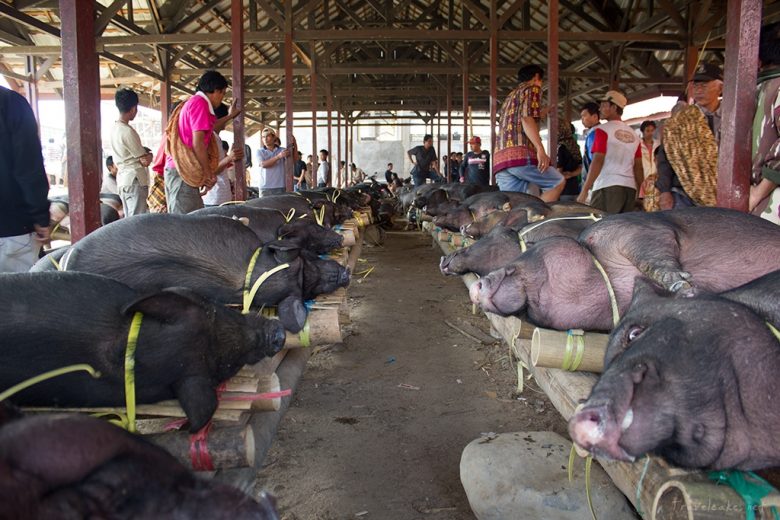
gifted pigs 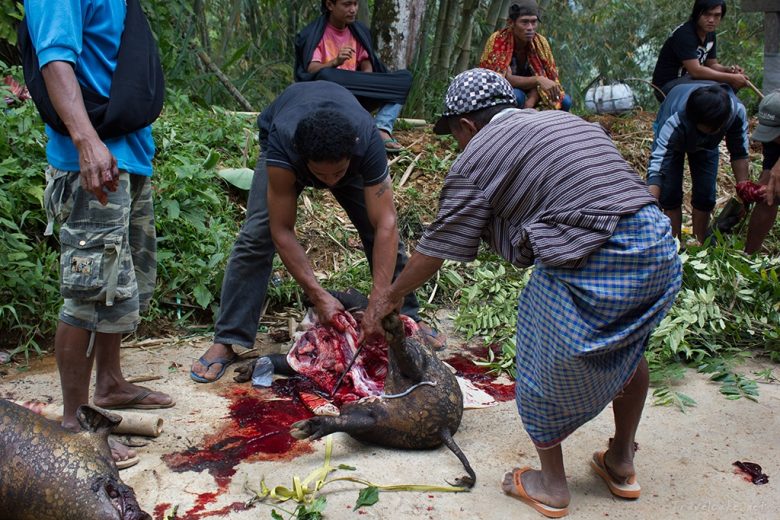
the meat is shared amongst guest and the blood is kept in bamboo Because buffaloes come with a high price tag, their horns are cut off and kept as a “trophy”. They are hung up on the deceased tongkonan and represent the family’s wealth. The more horns on your house, the wealthier your family.
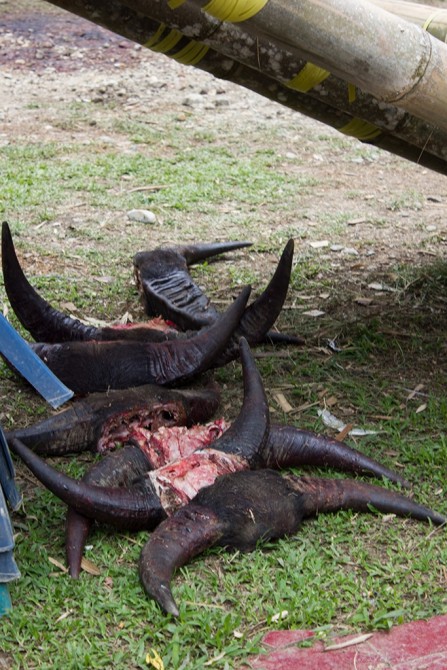
small buffalo horns 
tongkonan of a wealthy family When the funeral is completed the bodies are buried. Not under the ground, but in a cave or in a hole carved in a cliff. Family members craft a “tau-tau”; what could be compared to an avatar, representing the deceased. His/her spirit is believed to inhabit the tau-tau. They are placed on a balcony in front of the graves. Several times a year, after the rice harvest, family members ask their ancestors, inhabiting the tau-tau, for well being, good crops and healthy children.

graves in the cliff 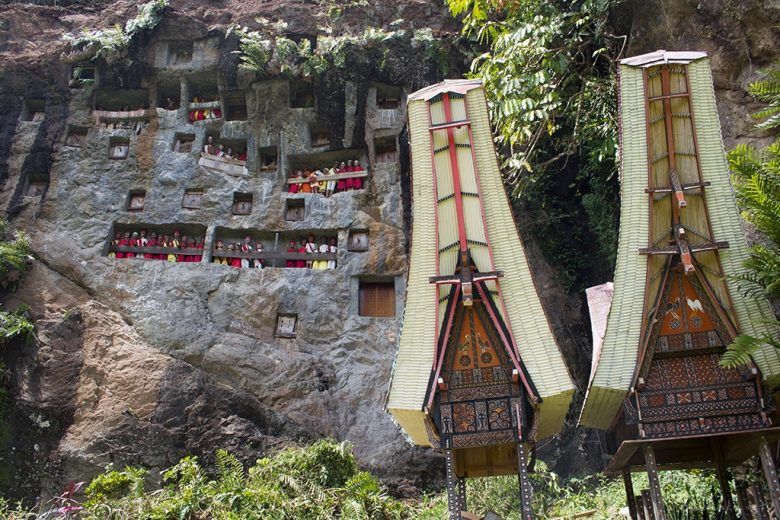
tau-tau and graves 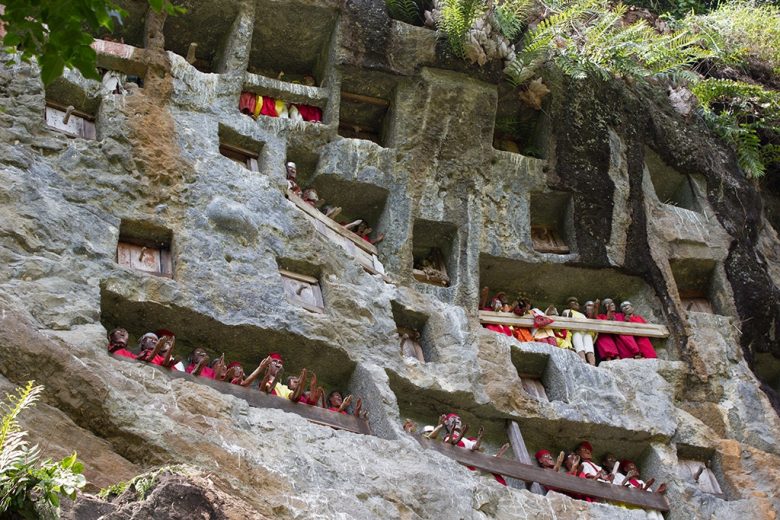
tau-tau; meaning not human, nor puppet. 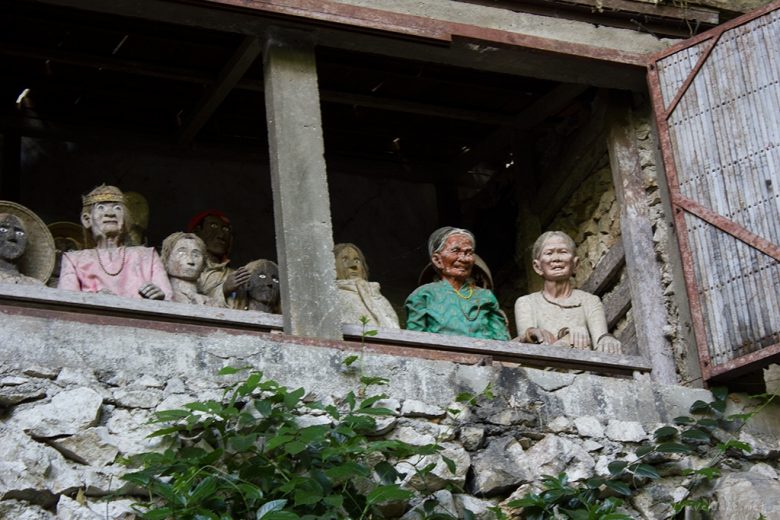
more live like tau-tau The burying ritual for babies is less complex. The lifeless babies are embalmed and placed in a sitting position in a carved hole of a large tree. The type of tree used a for the burying is a specific one; a thick white fluid oozes from its bark when cut. The fluid symbolises the milk the tree will feed the young child with. It embraces the babies by growing around them and closing the hole. It becomes their mother. These trees are considered sacred and may not be approached by outsiders but we were allowed to visit an old tree which is no longer in use.
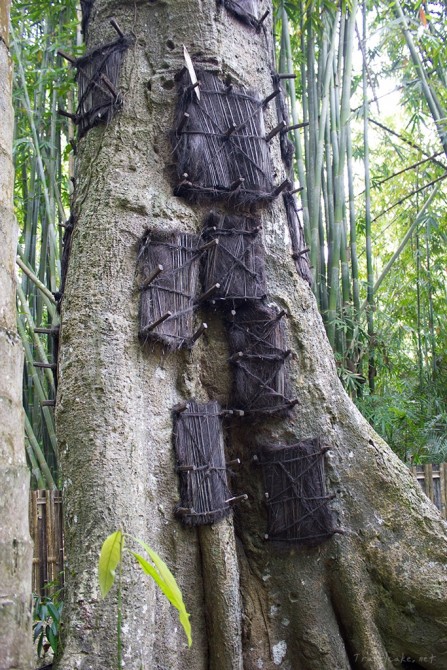
baby graves Attending a funeral is weirdly enough, a top attraction in Tana Toraja. I found it such an incredible enrichment to experience how this culture deals with death and what place it has in their communities. Watching the slaughtering was bit harsh, however that’s easily put into perspective since it’s so authentic. This is not some show put on for tourists, this is Torajan reality. People are so friendly and open, I quickly felt at ease.
‘Funeral season’ is in July and August, but there are funerals throughout the year. Tourists are welcome to attend them and are treated as honoured guests. Make sure you bring a gift to the family! There isn’t really a dress code, but obviously you should dress modestly and respectfully. If you have a black t-shirt, wear it; you’ll fit right in. The city of Rantepao is a good base to explore Tana Toraja.
Would animal sacrificing stop you from attending a local ritual?
The post ‘Torajan death rituals‘ first appeared on Travel Cake.
-
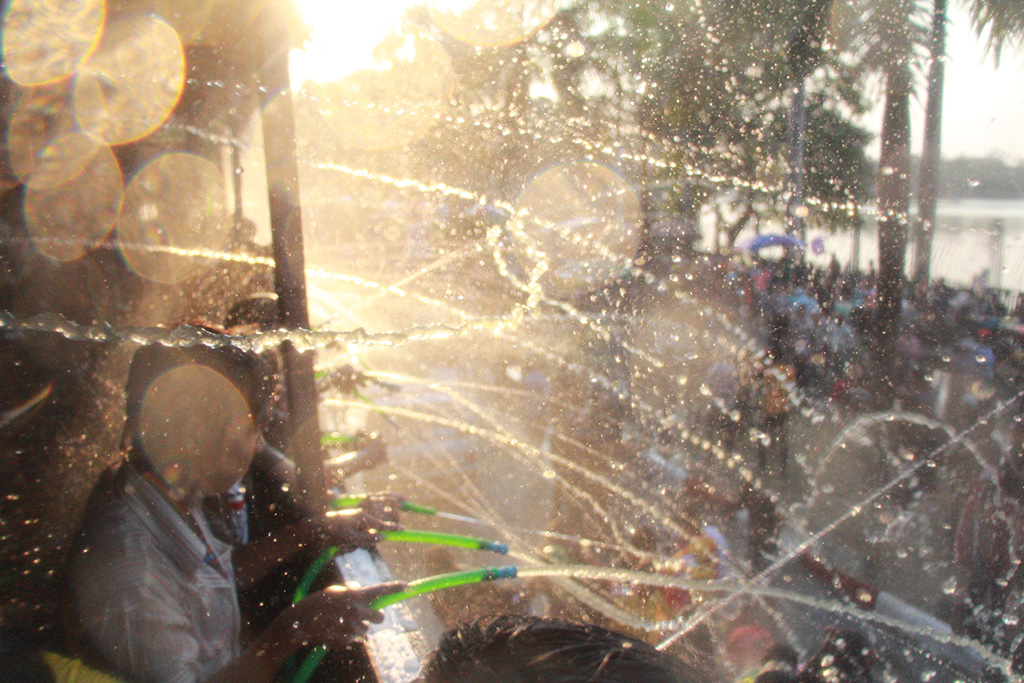
Thingyan, Water festival in Myanmar
Who doesn’t love a smashing new year’s party? What if I told you this party lasts a few days, takes place in the sunny outdoors and involves insane amounts of water… That’s Thingyan, the water festival leading to the Burmese New Year. The festival takes place throughout Myanmar around mid april, during the country’s hottest period. Similar waterfestivals are celebrated in the neighbouring buddhist countries Thailand, Laos (Songkran) and Cambodia (Chaul Chnam Thmey).
We were lucky enough to be in Myanmar for Thingyan. It’s the most important public holiday in the country and we were told that the best place to celebrate, is in the capital. So we set off to Yangon a couple of days before the festival as there is very limited transportation during the festival.
I hadn’t expected the water festival to be a big deal. Boy, was I wrong! It started in the taxi on the way to the centre. The driver had covered the seats and dashboard with plastic.
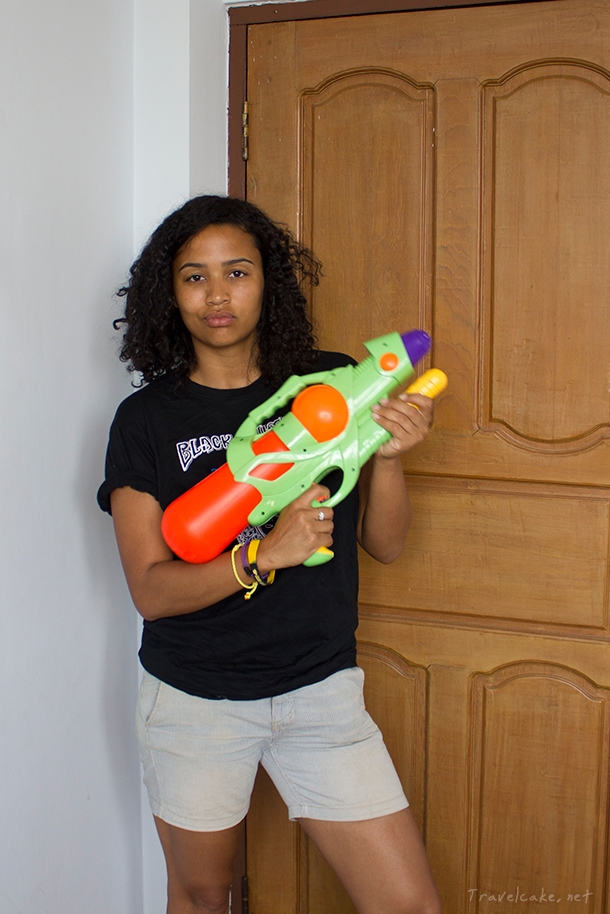
stupidly thinking I stood a chance with my super soaker… I asked him: “why is you car completely covered in pla…”
SPLASH!
An excited young man standing by the side of the road had just emptied a full bucket of ice water over my head. The taxi driver roared with laughter. “Happy happy?” he asked.
“Yes, happy…” I replied startled.
And so the tone was set…
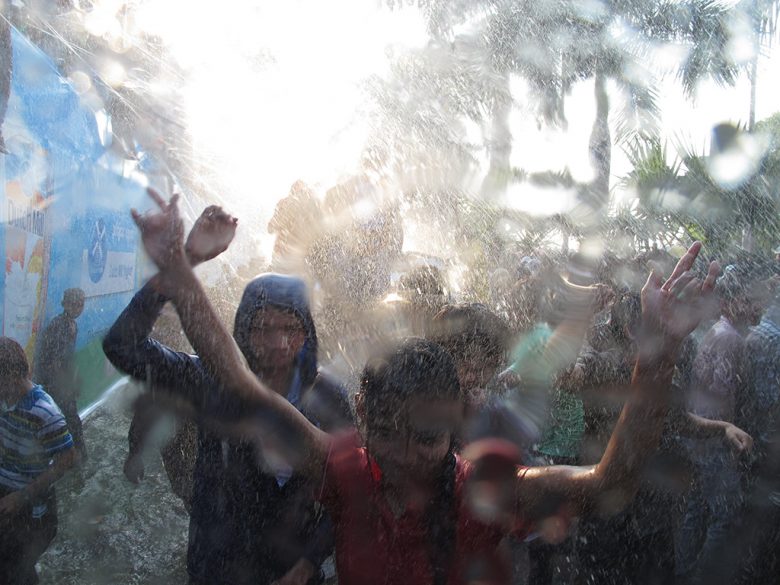
ready for Thingyan Although there is water thrown around absolutely everywhere, all the time -walking down the street in dry clothes is impossible- there are several areas where entertainment is provided. Most tourists found their way to the main square where a stage was set up featuring traditional dancers and water hoses. The dancing was beautiful but compared to what was going on in other parts of town this was quite boring.
THE place to be for Thingyan in Yangon is at the Kandawgyi Lake. That’s where all the cool kids go. It’s fun, loud, and utter madness. Dozens of temporary water spraying stations are set up and double as dance stages. Pop and electro music blares from the speakers as the people dance, play and sing under what can only be described as the world’s largest shower. Every two steps a cheerful Burmese shakes your hand and asks “happy happy?”. You reply “happy happy!”.
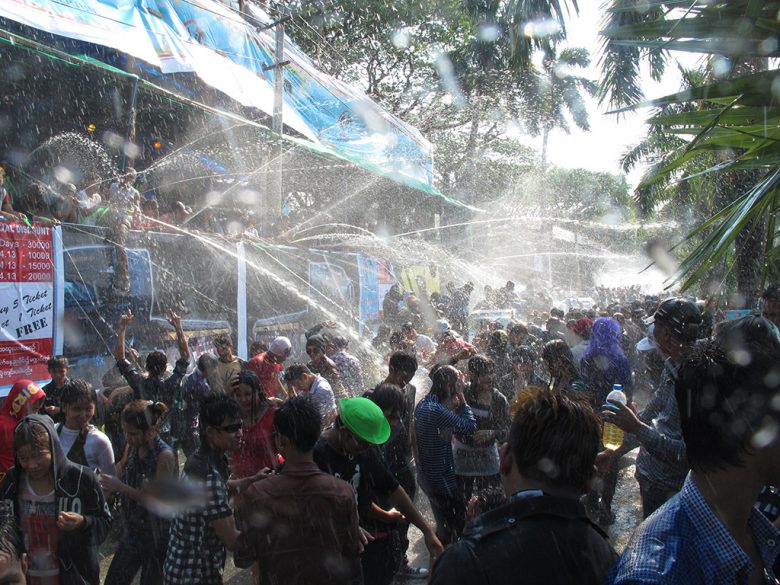
world’s largest shower (1.5km long) Every single person is soaking wet and carries some kind of container filled with water. When you’re not standing under the “mega shower” someone empties their container over you and simultaneously wishes you a ‘Happy New Year’.
The water is pumped out of the lake and is flowing morning to sunset, non-stop. Hoses used to soak festivalgoers vary from regular garden hoses to fire hoses! At some point I was even sprayed down with a high-pressure washer which was quiet painful. But it’s for a good cause: the festival is held to wash away evil deeds, bad luck and sins from the past year before entering the new. Many of the adolescents take advantage of the more or less ‘free pass’ to commit some last minute “sins”. Drinking in public, walking hand in hand with their crushes, dressing and dancing provocatively…
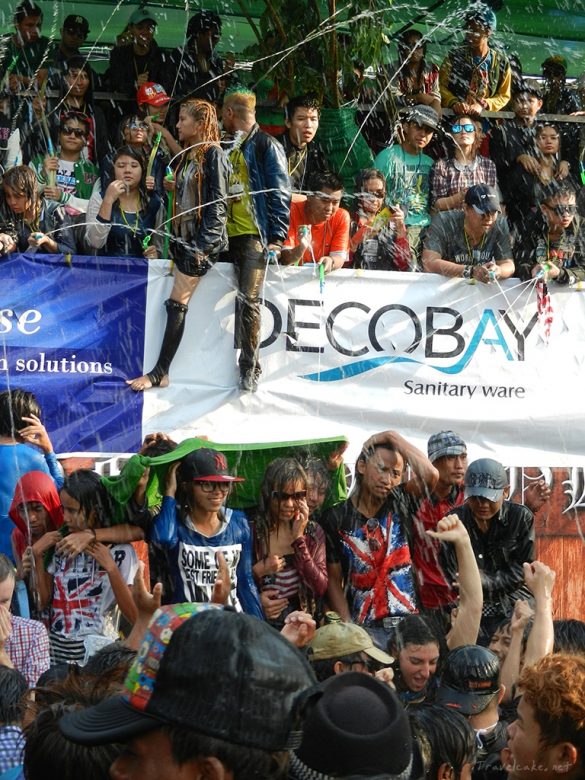
the cool kids in town Black Culture, organiser of one of the spraying stations, invited us to party on their dance floor. The DJ played some good beats and we mingled with the teenagers, hosing down passers-by. It reminded me of the City Parade, plus shower.
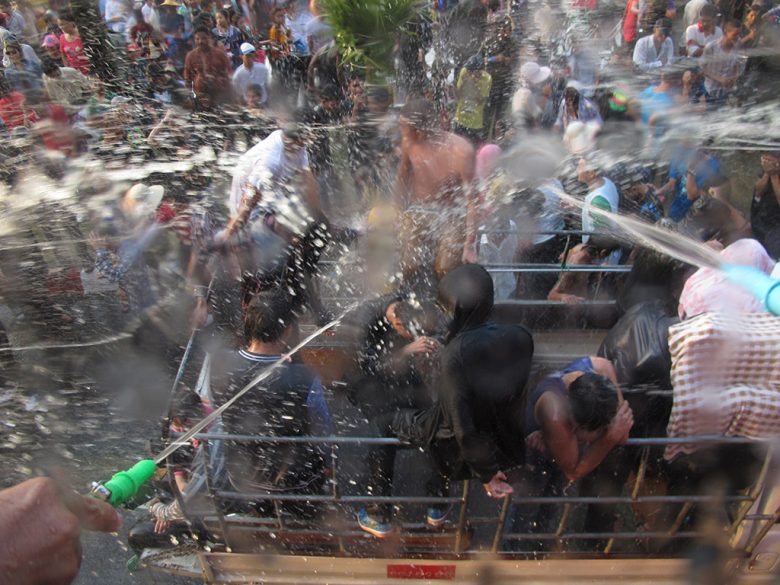
from the spraying platform 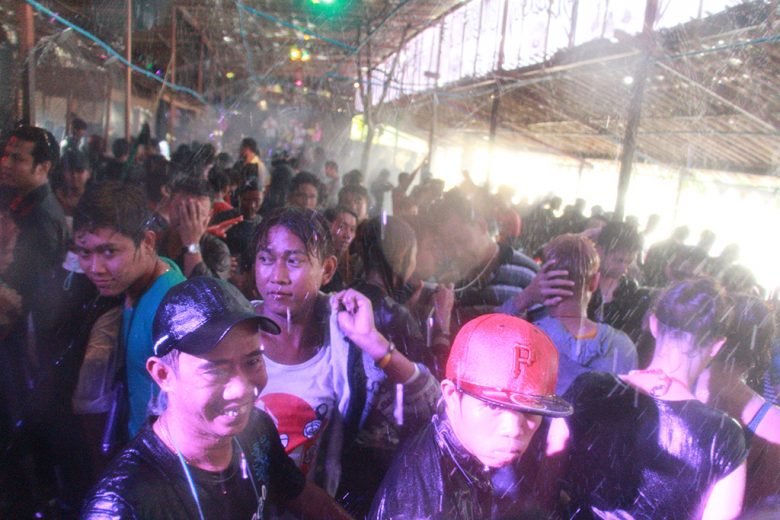
on the dance/hose down stage, photo by Marc-Antoine Martineau 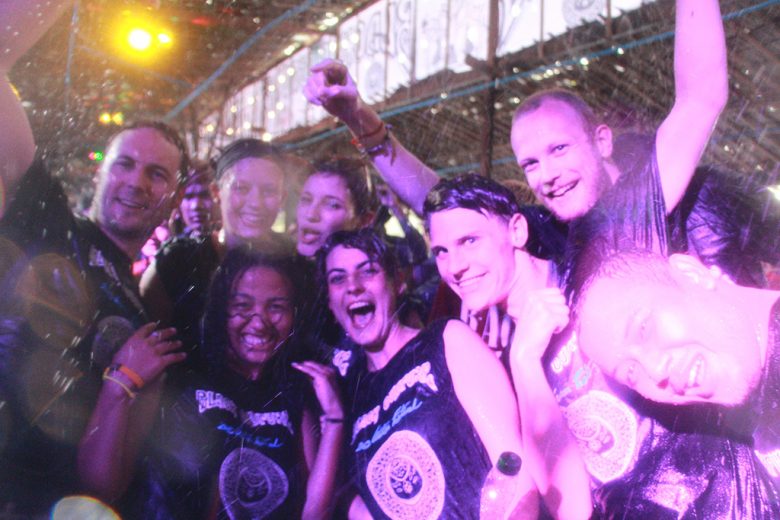
party at Black Culture, photo by Marc-Antoine Martineau The enthusiasm, excitement and happiness of the people were mind blowing. But then again, not really… This is the only time a year where the Burmese government permits crowds to gather in public areas. It’s the only time where colour, rank and status have little or no significance. Everyone is included; kids, grand-parents, business men in suits, tourists, bus drivers…
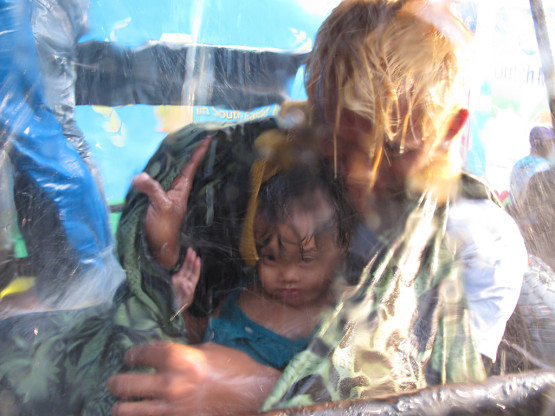
hiding under dad’s coat The Burmese usually come across as soft-spoken, shy people, however, during Thingyan, they change into a fun-loving, outgoing crowd. Seeing this metamorphosis -maybe partly due to their alcohol consumption- is one of the things I enjoyed most about the water festival.
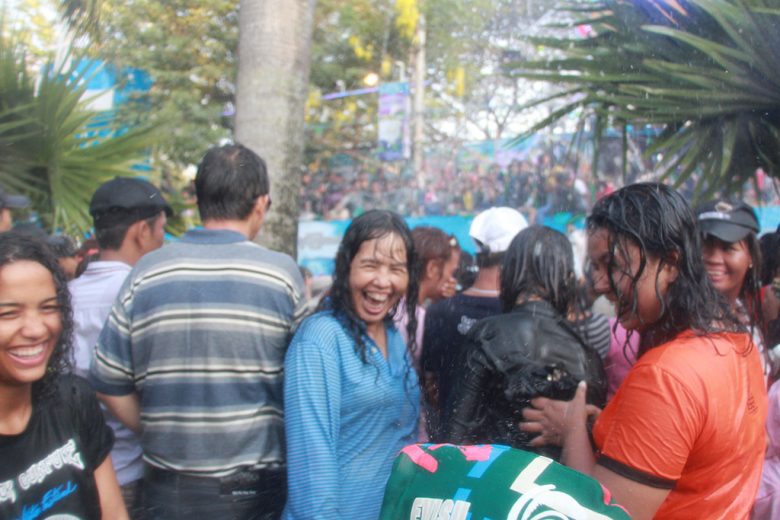
joking around with local women, photo by Marc-Antoine Martineau The festival lasts 3 to 5 days and the parties are mainly during day light. After sunset the participants return home and get a good night’s rest to resume the festivities the following day.
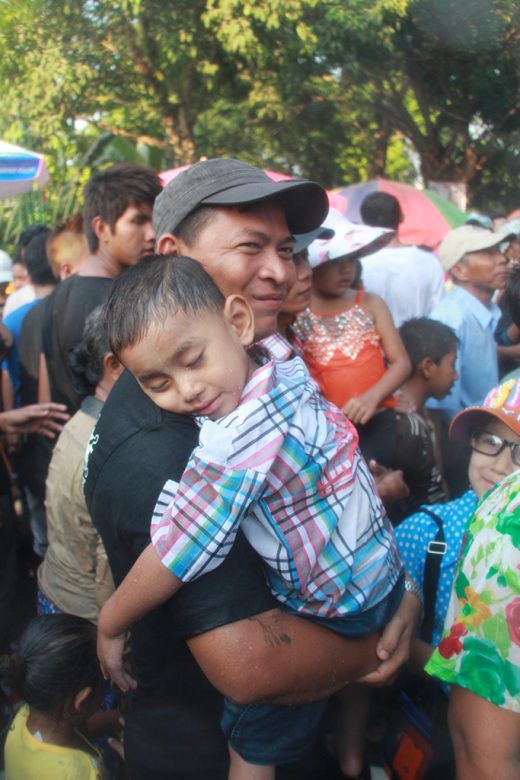
ending a fun day with a sleeping smile, photo by Marc-Antoine Martineau TIPS
It’s important to really participate. Let go of your inhibitions and dance, jump, party… Get in there, allow people to talk to you. Go just as nuts as they do!
Those wanting to take a break from the madness or wish to take it easy, there are funfairs and (wet) food stands around the premises.
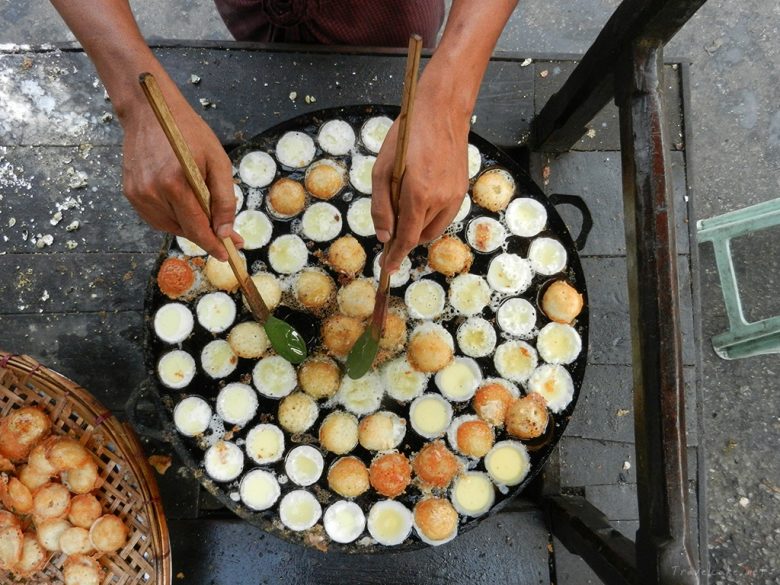
greasy snacks Don’t forget to protect your camera and other tech stuff from the water!
If you do manage to take a train or bus during Thingyan, don’t think your safe. You will get hosed down in there too!
Celebrate Thingyan in 2014 from Sunday April 13th to Wednesday April 16th.
Have you heard of Thingyan? Would you enjoy such a festival?
The post Thingyan, Water Festival in Myanmar first appeared on TravelCake.net
-
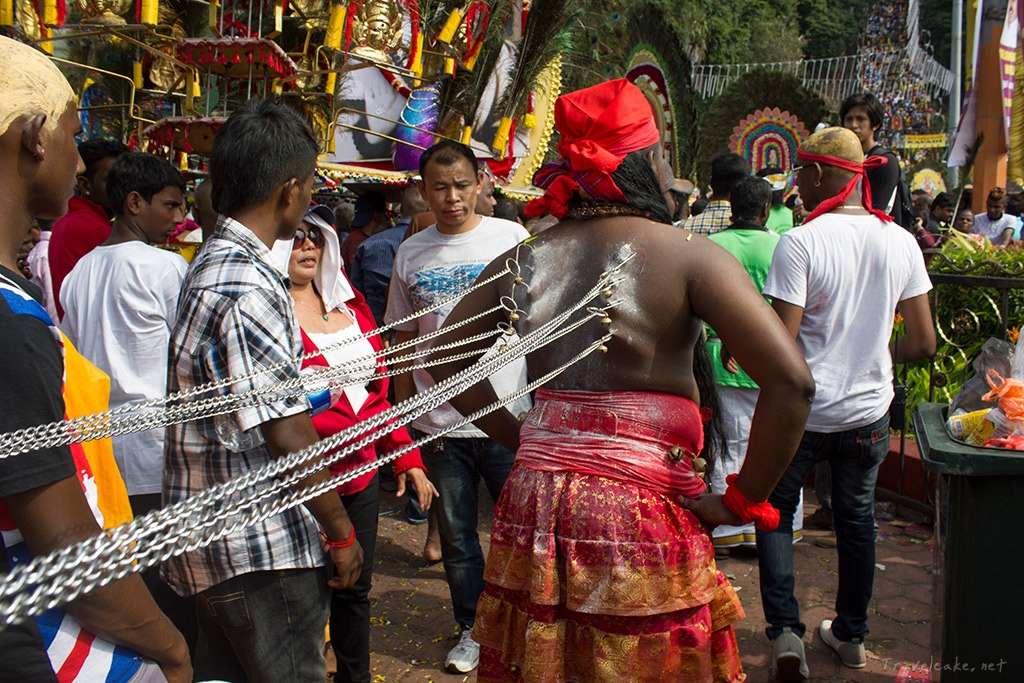
Spiritual Tourism: Thaipusam 2014
“Experiencing the festival of Thaipusam”… Yes!! Another travel wish come true. A few years ago, upon doing some research on my travel destination Malaysia, this festival had spiked my interest. I was quite upset when I found out I was just a few weeks late for one of the country’s biggest cultural/religious festivals. Six years later, I was pressed against strangers on a train to Batu Caves where Thaipusam was taking place.
Upon arrival I was overwhelmed by strong smells of fried spices, Indian tunes blasting from every stall and an overly excited crowd. I threw myself into the mass to get as close to the action as I possibly could. It was steaming hot and slightly claustrophobic at times, but it was an experience I will never forget.
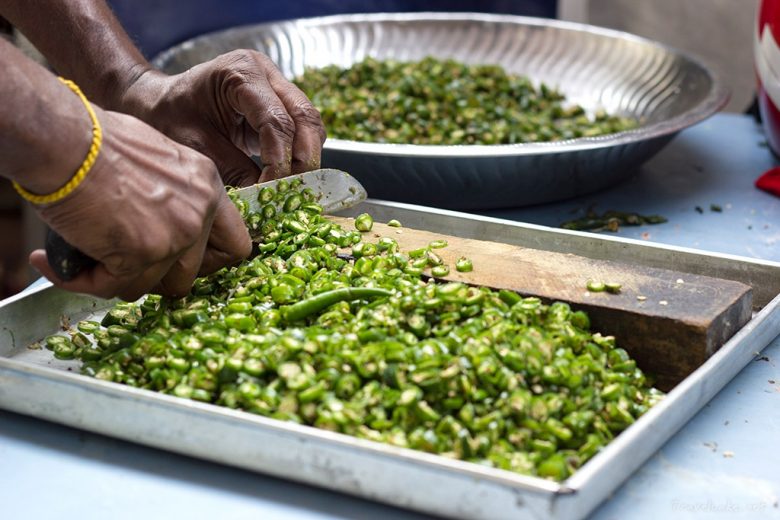
fresh chili’s Thaipusam is a Tamil celebration of faith and gratitude which takes place every year between January 15th an February 15th. It’s the commemoration of the occasion where Hindu goddess ‘Parvati’ gave ‘Murugan’, god of war, a “vel” (spear) so he could vanquish the evil demon ‘Soorapadman’. Devotees make a vow to offer a “kavadi” i.e a physical burden, to request a favour from the god Murugan. The participants then start their journeys 48 days before Thaipusam by ‘cleansing’ themselves through fasting, praying and observing celibacy. On the eve of the big day, devotees carrying their kavadi, start their 15km pilgrimage- in this case from the main temple in the centre of Kuala Lumpur to the Batu Caves. The intensity of the kavadi ranges from carrying jugs of milk (symbol of purity and virtue) to followers taking a vow of sacrifice at every step by piercing their skins with hooks and spears.
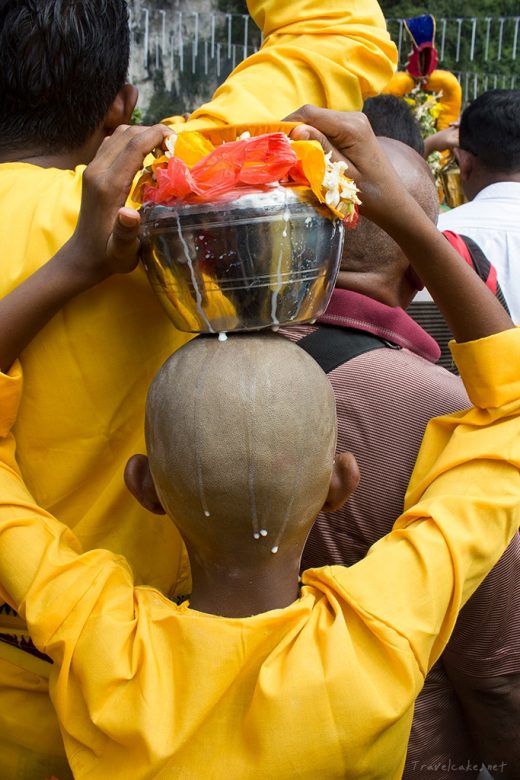
carrying milk to the temple 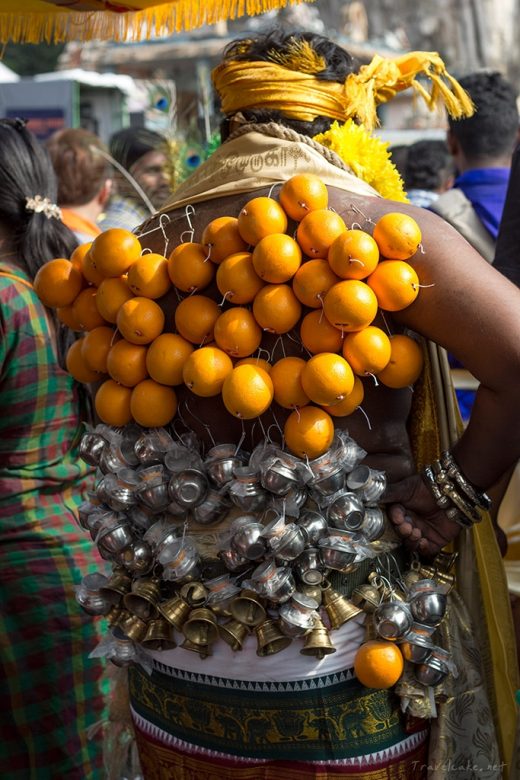
oranges and miniature milk pots to weigh down the hooks 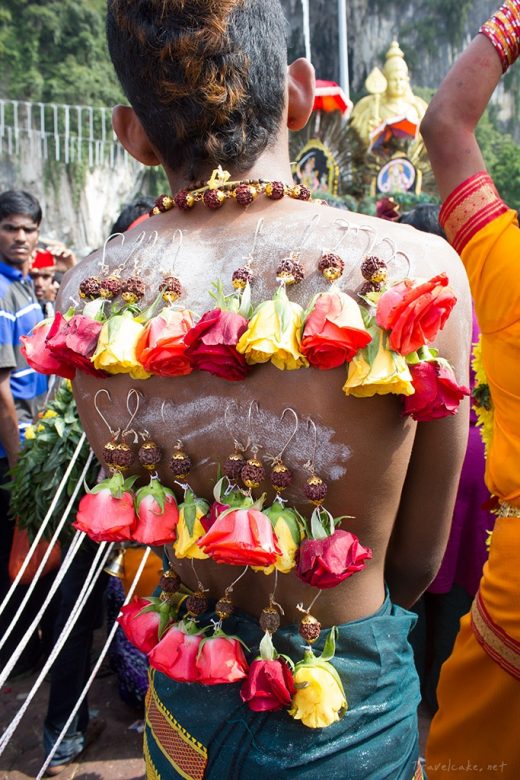
beginners start with lighter weights 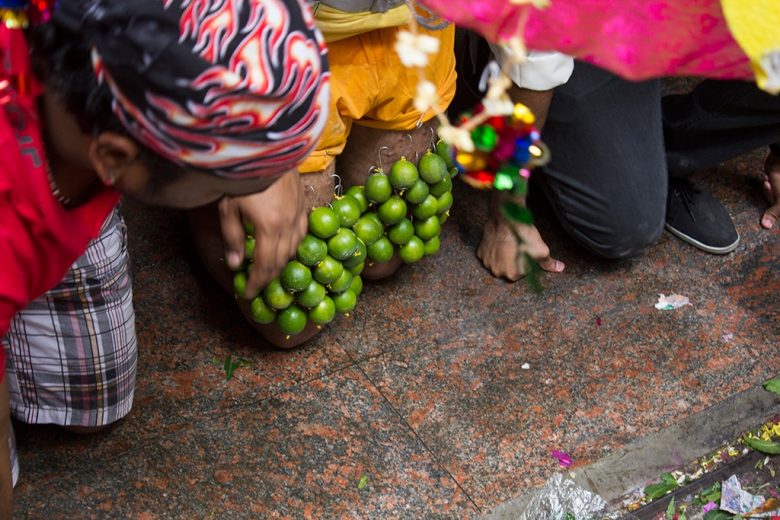
some chose to pilgrim on their knees 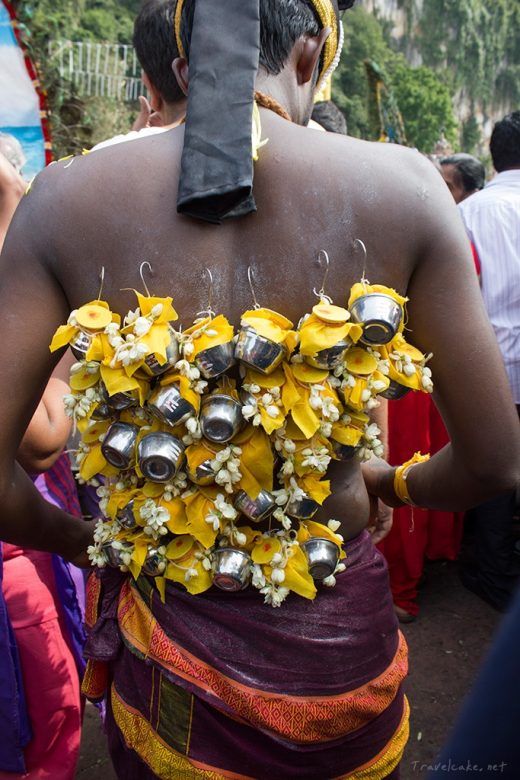
milk and jasmin flowers 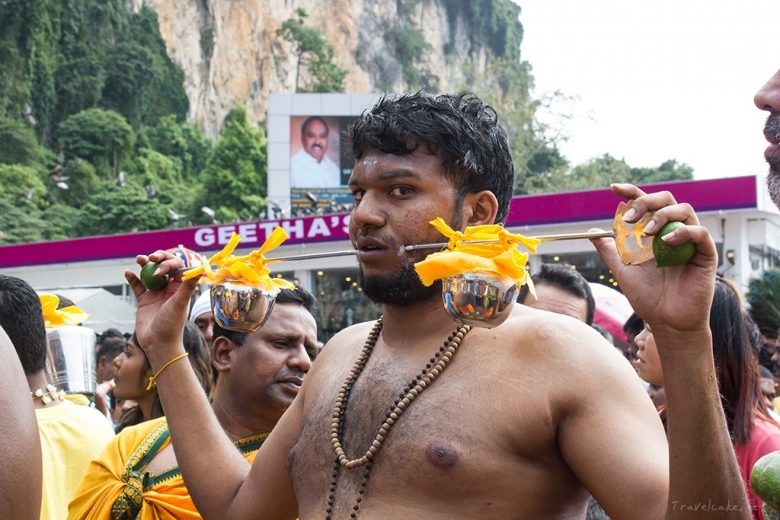
cheeks pierced with a spear 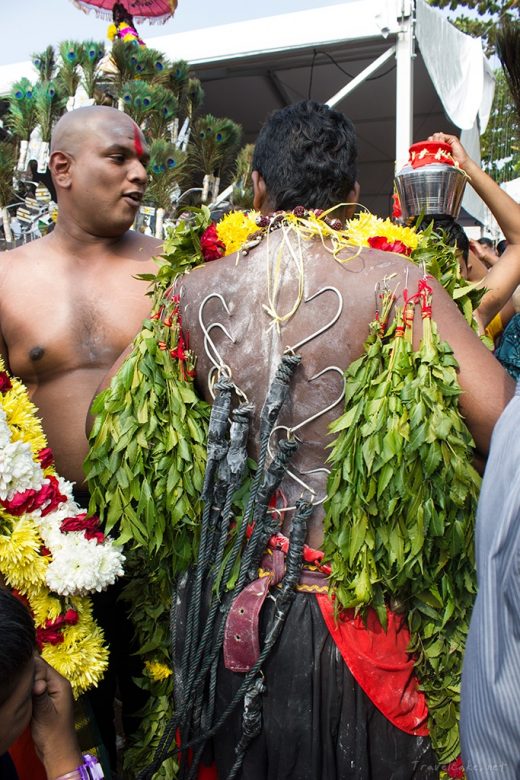
intense kavadi 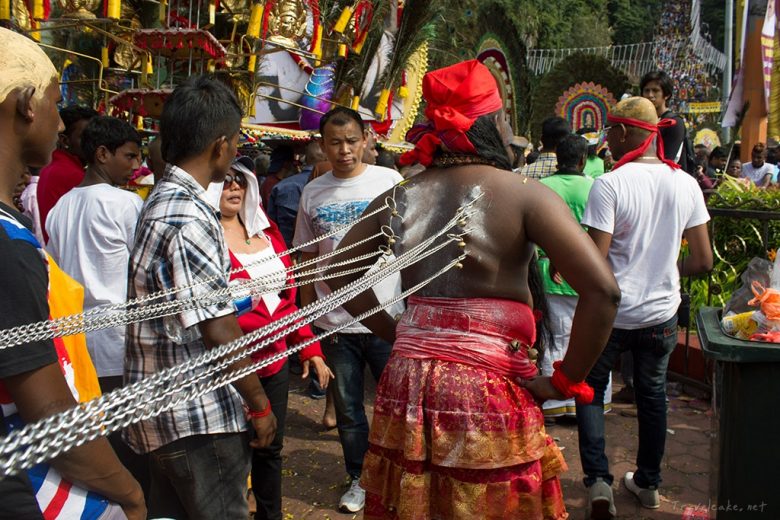
chains to control pain level intervals Most of them bring along some kind of an entourage playing music, singing and encouraging them by repeatedly shouting the words “vel vel!” in a trance-like way.
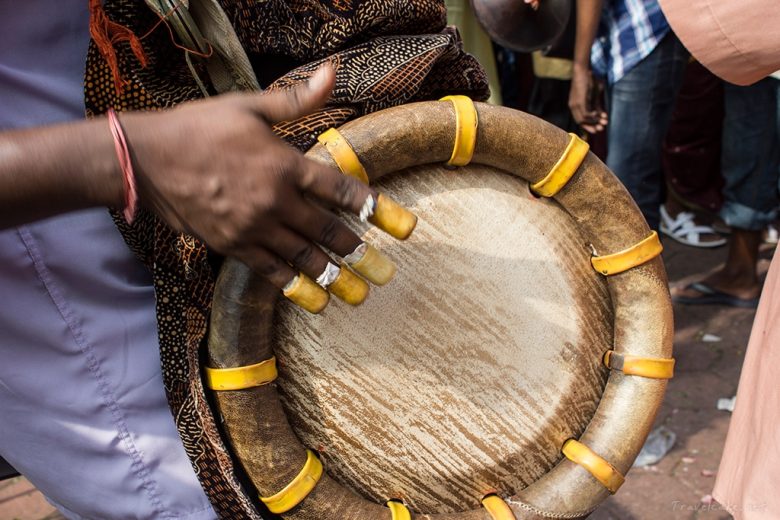
mersmerizing drum beats 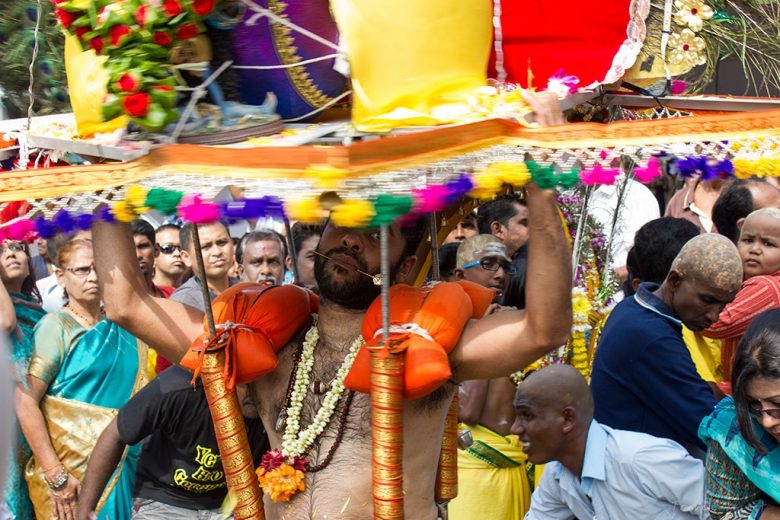
dancing to the rythms Though it’s less common, women and children also take part in the procession. Most of them carry milk, but every now and then you can spot a few of them enduring the pain.
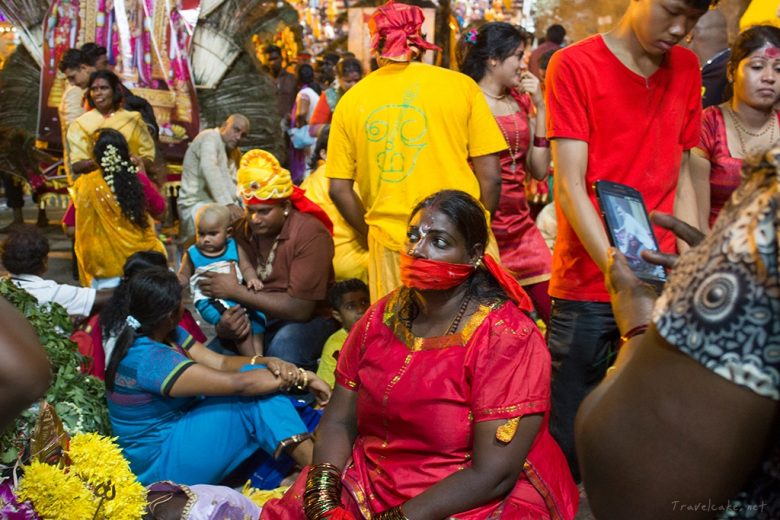
vow of silence The participants numb their pain with natural herbs and consecrated ashes, moreover helping them to reach a state of trance.
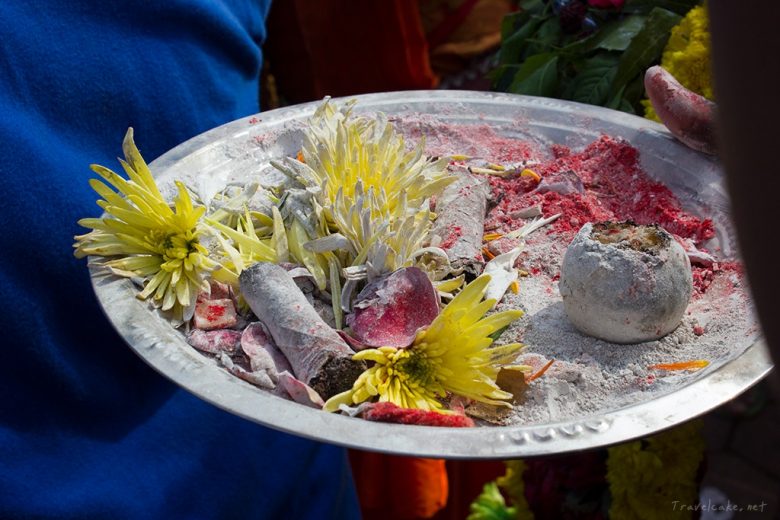
ashes and ‘special’ cigars 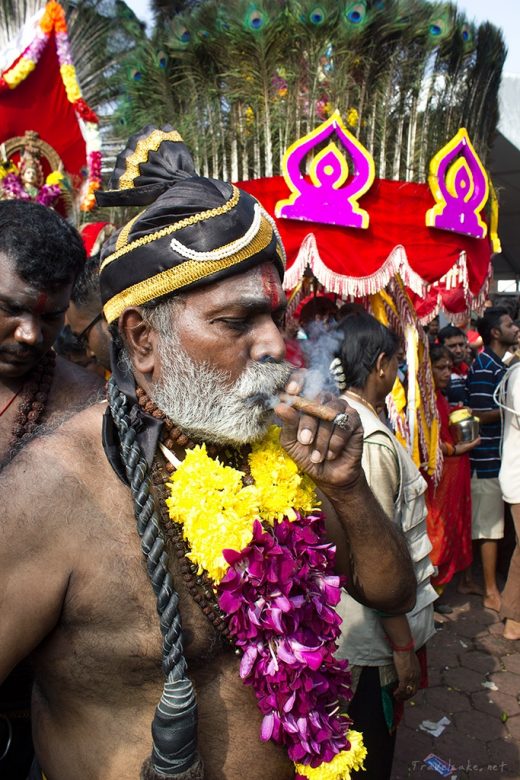
taking a smoking break 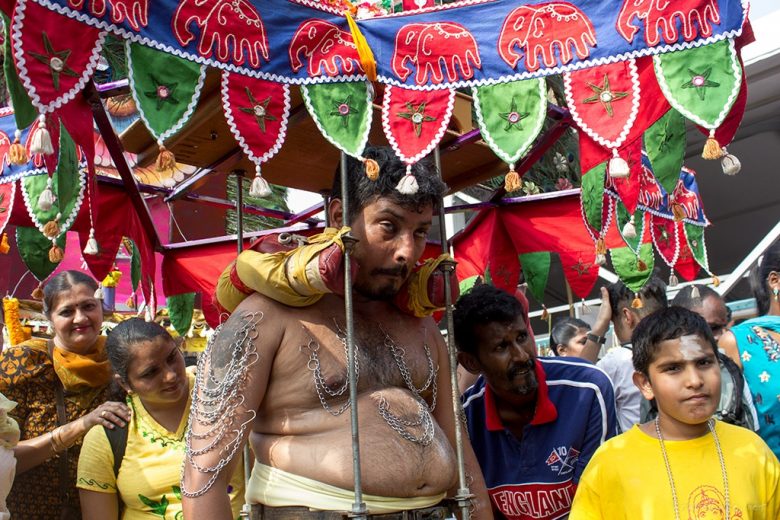
stupefied devotee 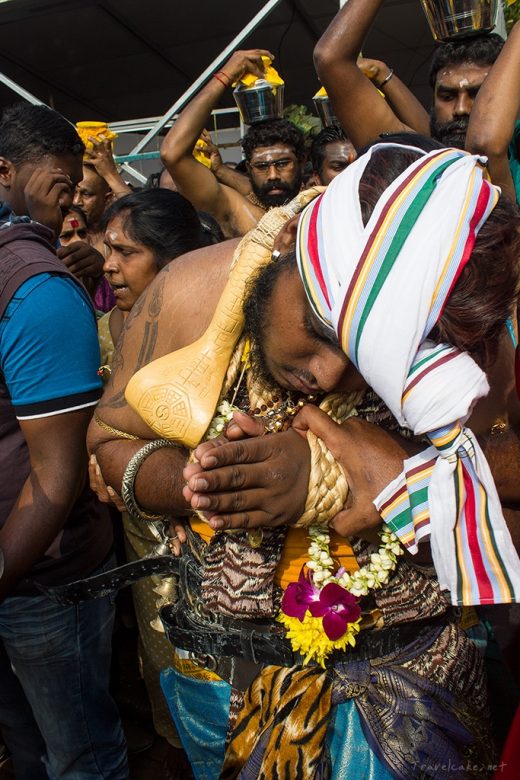
devotee’s spirit transformed into that of a sleeping snake A strange mix of suffering, exhaustion, pleasure, trance, curiosity and spiritual bliss come together to form a peculiar and intense atmosphere during the procession.
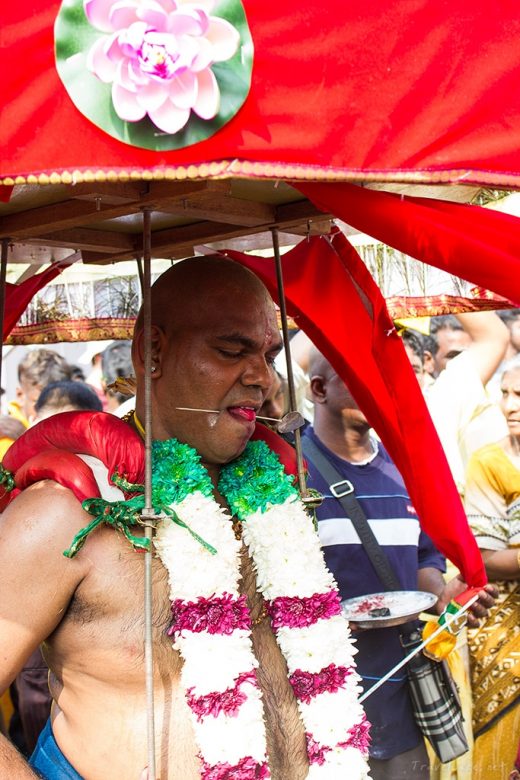
suffering 
exhaustion 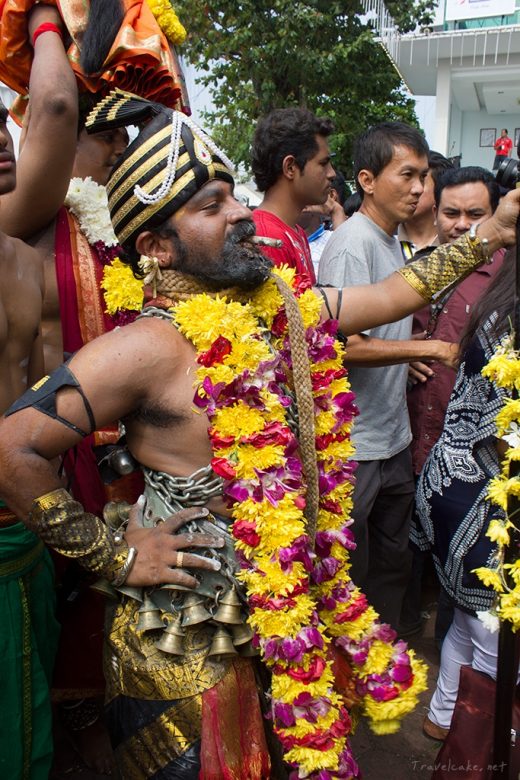
pleasure 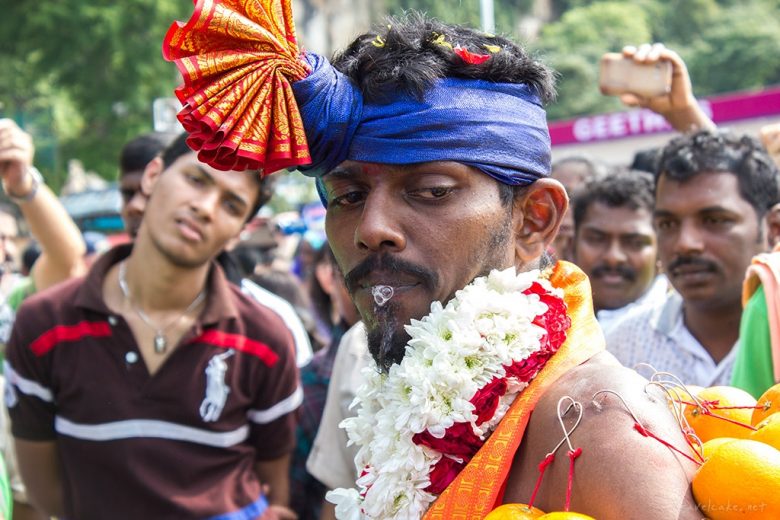
trance 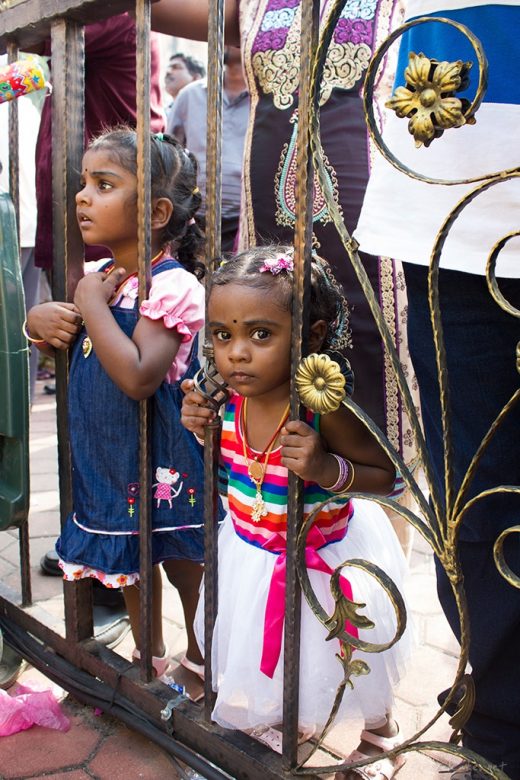
curiosity 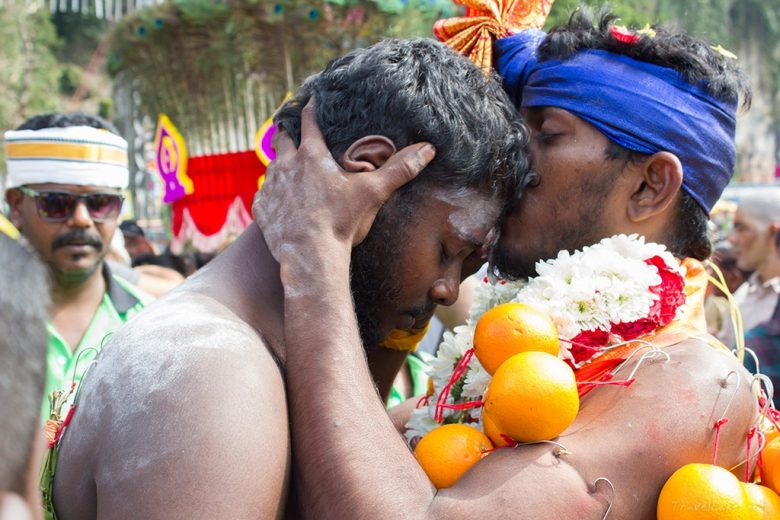
spiritual bliss 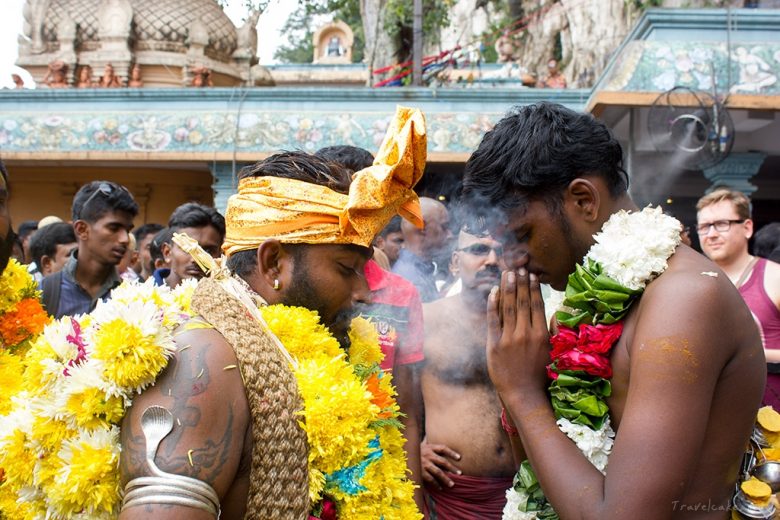
priest attending to devotee before entering the caves The final sacrificial act of faith is for devotees to climb up a 272 step stairway to deliver their offerings in the Batu Caves temple.
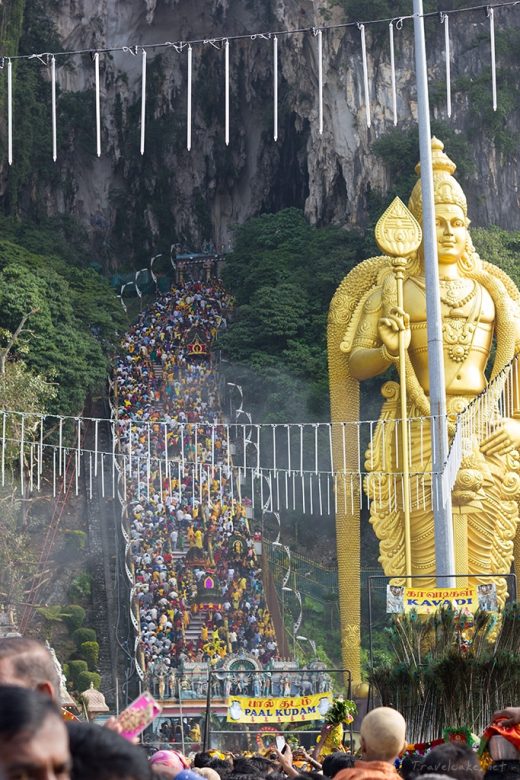
Murugan guarding the steps to Batu Caves 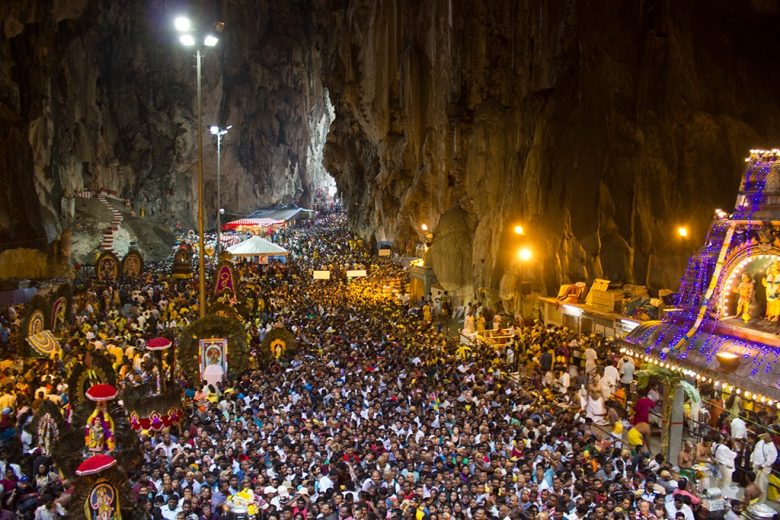
inside the cave Once inside the caves, the milk is offered and the hooks are taken down. Consecrated ash is sprinkled over the devotees’ hooks and piercing before they are removed. No blood is shed during the piercing and removal.

priest removing the hooks TIPS
Leave your “germophobia” at home. If you want to get a sense of what’s going on, you’ll be close to people. Very close. You’ll be covered in sweat and I guarantee you it won’t necessarily be yours.
To get to the Batu Caves, take the KTM. It’s not a good idea to take a car or a taxi. Unless you just love traffic jams.
The procession goes on all throughout the day. However, it’s best to get an early start as it can get pretty hot during the day; 8.30-9.00AM is a good time to arrive.
In order to get some good pictures, start at the road, where devotees begin the last leg of their journeys. Then slowly make your way to the entrance of the caves.
You can climb up the steps with the devotees and enter the caves, but beware, this can be a long process. Unless you’ve never been in the Batu Caves, there not really much to see inside except… People… Oceans of people!
Once you’re ready to leave the scene, don’t take the KTM back. There is a long queue to enter the train which will be over packed. Instead catch a bus going direction ‘town’.
Would you consider going to a crowed cultural festival like Thaipusam?
